Vegan Globetrotter is supported by our audience. When you purchase through one of our links, we may earn a small affiliate commission. As an Amazon Associate I earn from qualifying purchases. Your cost is not affected.
==================
Radiant and induction cooktops represent two modern, energy-efficient alternatives to traditional gas stoves. A radiant cooktop generates heat through electric coils or a heating element beneath a glass-ceramic surface. The heat radiates to the cooking surface, then is transferred to the cooking vessel, making radiant cooktops popular. On the other hand, an induction cooktop, another smooth cooking surface, utilizes an electromagnetic field to produce heat directly within the cookware, bypassing the heating element stage. This induction cooking method is efficient as it allows less heat loss than radiant ones.
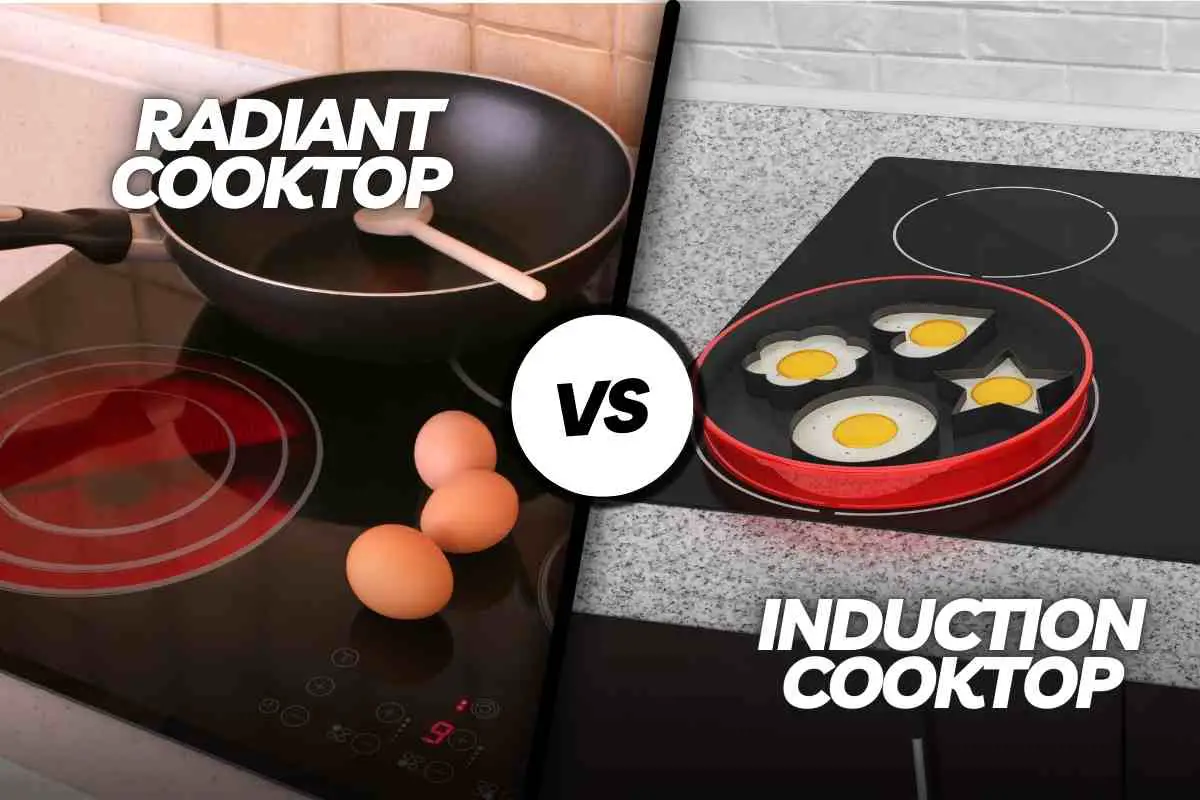
Both induction and radiant cooktops provide a smooth surface that is easier to clean than gas stoves. Still, one must learn induction cooking nuances, like the need for induction-compatible cookware, to maximize its benefits. As you explore radiant vs. induction cooktops, consider factors like cooking habits, energy efficiency, and cookware compatibility to choose the best fit.
Radiant and induction cooktops have become central to contemporary kitchens with the evolving culinary world. This article provides a comparative analysis of radiant vs. induction cooktops, delving into their design and appearance, which are as essential as their functionality.

Physical Appearance
Radiant Cooktop
A radiant cooktop is a sleek, modern cooking surface known for its smooth, glass ceramic surface. Electric coils, or heating elements, are underneath this flat surface, and they generate heat via a heating element, usually a metal coil. When turned on, the heating elements glow with radiant heat transferred to the cooking vessel. Radiant cooktops offer a uniform look because of the heating elements, visually indicating the hot cooking surface.
Induction Cooktop
Induction cooktops, on the other hand, feature a similar glass ceramic surface but work differently. These cooktops use electromagnetic energy to generate heat directly in magnetic cookware, typically cast iron or stainless steel pots. The induction cooking method requires an alternating magnetic field that interacts with the ferrous metal in your pots and pans, creating heat. As such, induction cooktops tend to have a clean, minimalist design since the induction elements remain invisible underneath the surface.
Size and Portability
Radiant Cooktop
Radiant cooktops come in various sizes, from miniature, compact versions suitable for tiny kitchens or RVs to large, multiple burner units for expansive kitchen spaces. These cooktops are generally more cumbersome and less portable due to their structure’s significant amount of glass and electric coils.
Induction Cooktop
In contrast, induction cooktops are usually lighter and more compact, making them more portable. The absence of traditional heating elements makes them thinner, and they come in various sizes, including single-burner units that are perfect for small apartments or those who desire additional burners.
Variety of Styles and Finishes
Radiant Cooktop
Radiant cooktops offer a wide range of styles and finishes. From traditional white or black ceramic cooktops to stylish stainless steel or even colored glass, you can find a radiant cooktop to match any kitchen decor.
Induction Cooktop
Induction cooktops work with electromagnetic coils beneath the surface, offering a sleek and modern appearance. These cooktops are generally available in black or silver, with a smooth ceramic glass surface that provides a clean and sophisticated look.
Installation and Maintenance
Choosing between a radiant and induction cooktop is an important decision that affects not only the quality of your cooking food but also the energy efficiency of your kitchen. These cooktops offer a smooth cooking surface, but how they generate heat sets them apart.
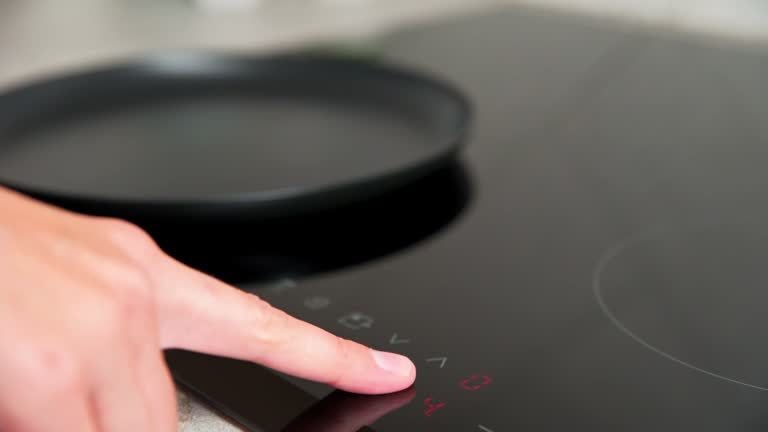
Installation Process
Radiant Cooktop
Radiant cooktops use electric coils or heating elements beneath a glass ceramic surface to produce heat. The heat then radiates through the cooking surface, heating the cooking vessel. Installation of a radiant cooktop involves setting it into a cut-out in the counter, then connecting it to a power source.
Induction Cooktop
Induction cooktops, on the other hand, use electromagnetic coils beneath the cooking surface. They generate heat by creating an alternating magnetic field that interacts with ferrous metal cookware, such as cast iron or stainless steel pots. Installing induction cooktops is similar to radiant ones, requiring a cut-out in the counter and connection to an electric current.
Cleaning and Maintenance
Radiant Cooktop
Cleaning a radiant cooktop involves dealing with the occasional burned food that adheres to the hot cooking surface. Glass and other glass cookware can leave marks that require specific cleaning solutions. A flat surface makes it easy to wipe down, though the heat generated by the heating element may cause discoloration over time.
Induction Cooktop
Induction cooktops are easier to clean. Because the heat source is the pot itself, the ceramic glass surface remains cooler, which reduces the chance of food sticking. Since induction elements only heat the cooking vessel, the rest of the cooktop stays cooler, minimizing heat waste.
Durability and Lifespan
Radiant Cooktop
While radiant cooktops tend to be less expensive initially, they may require more maintenance over time, and their lifespan can be shorter. The heating elements, often made from metal coils, can degrade over time, leading to uneven heating. The ceramic cooktops can also scratch or crack with rough use, affecting radiant heat transfer to your pots and pans.
Induction Cooktop
Induction cooktops, on the other hand, offer more durability and longer lifespan. Because they use electromagnetic energy rather than a physical heating element, there is less wear and tear. The heat produced is in the pot itself, resulting in less heat loss to the surrounding area, which can extend the life of the cooktop. However, using induction-compatible cookware responding to the magnetic field would be best.
Performance and Functionality
The radiant and induction cooktop has unique benefits and features that enhance the cooking experience. Each type of cooktop provides a unique approach to generating heat, and understanding their functionality and performance can help determine the best fit for your kitchen.
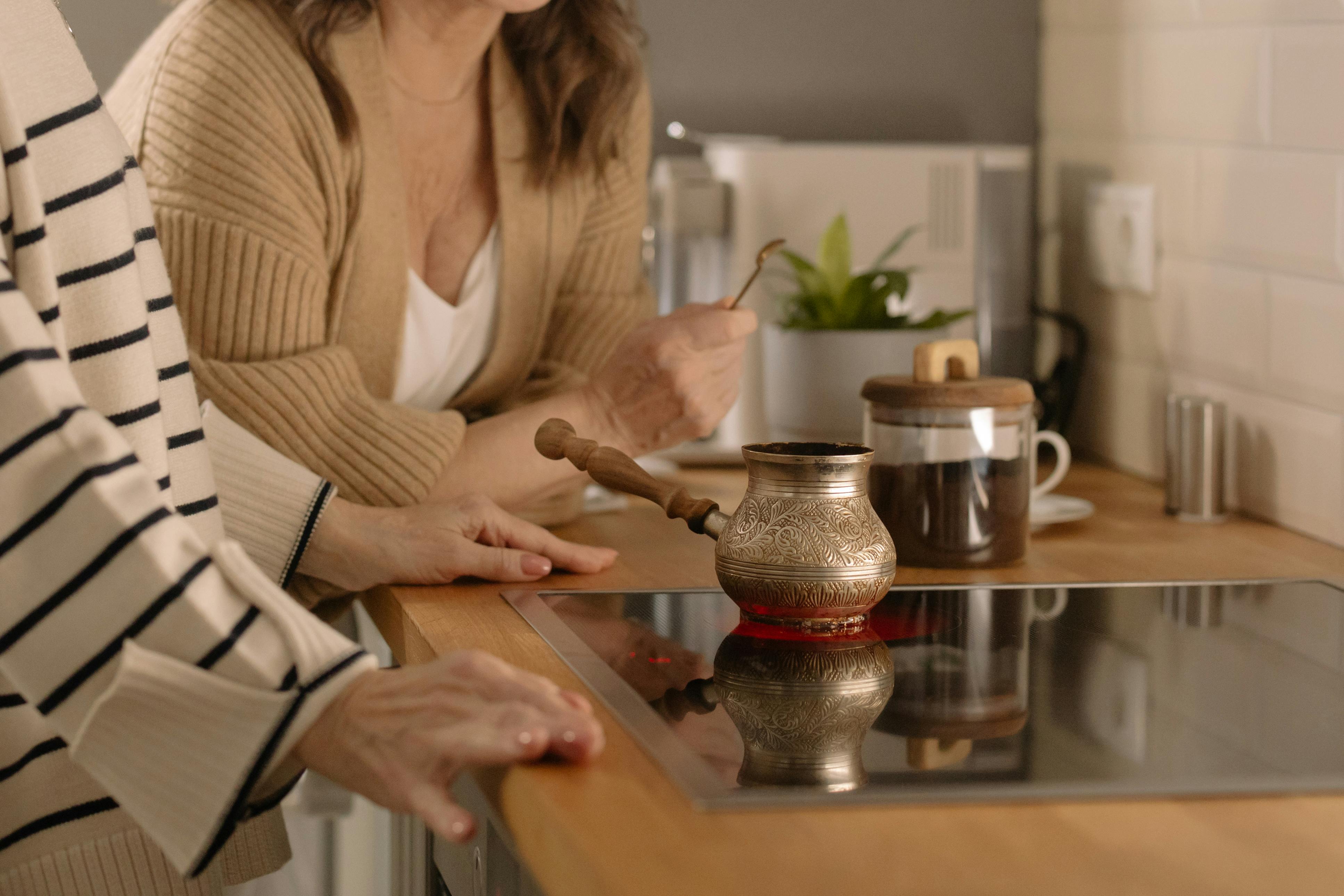
Speed and Efficiency
Radiant Cooktop
Radiant cooktops, traditionally made from ceramic glass, use electric coils or a halogen lamp underneath the cooking surface to generate heat. This heat transfers to the cooking vessel, warming the food inside. Radiant cooktops heat up and cool down more slowly than their induction counterparts. They are, however, more compatible with various types of cookware.
Induction Cooktop
On the other hand, induction cooktops, famous for their energy efficiency, employ an entirely different method to produce heat. Induction cooktops pass electricity through a copper coil, creating an electromagnetic field that directly heats the cooking vessel. This method allows induction cooktops to heat up and cool quickly, offering an energy-efficient alternative to traditional gas stoves and electric cooktops.
Cooking Precision and Control
Radiant Cooktop
Radiant cooktops have been lauded for their simplicity. With a heat source that steadily generates heat, they allow the cooking surface to maintain a consistent temperature. The heat distribution on a radiant cooktop is straightforward; the heating elements get hot, and the heat radiates outward from the point of contact. This is a simple, reliable method of cooking food.
Induction Cooktop
Induction cooktops offer a high degree of precision and control. The heat is generated directly within the pot or pan rather than heating the surface, resulting in rapid temperature changes. With induction cooking, there’s less risk of burned food, and adjustments to the temperature are immediate, making induction cooking an ideal method for recipes requiring precise temperature control.
Power and Heat Distribution
Radiant Cooktop
The electric or halogen heat source evenly distributes heat across the smooth ceramic glass surface in a radiant cooktop. While this method can result in some heat loss, the radiant heat tends to spread evenly across the cooking vessel, making it a good choice for oversized pots and pans.
Induction Cooktop
Induction cooktops, by contrast, use an alternating magnetic field to heat the cooking vessel directly. The heat generated stays concentrated in the pot or pan, producing negligible heat waste. Moreover, induction elements provide superior heat distribution since the heat source is the cooking vessel.
Noise Level
Radiant Cooktop
A radiant cooktop is usually noise-free, providing a serene cooking environment. Since the heat transfer relies on radiant heat from a heating element or halogen lamp, no vibration or noise is associated with the heating process.
Induction Cooktop
Induction cooktops can sometimes produce a slight hum or buzz due to the high energy passing through the electromagnetic coils. However, this noise is often minimal and barely noticeable.
Safety Considerations
The radiant vs. induction cooktop debate often circles safety and heat management. When cooking, the primary safety considerations to keep in mind are heat generation, cooling, risk of burns, injuries, and the availability of automatic shutoff and child lock features.
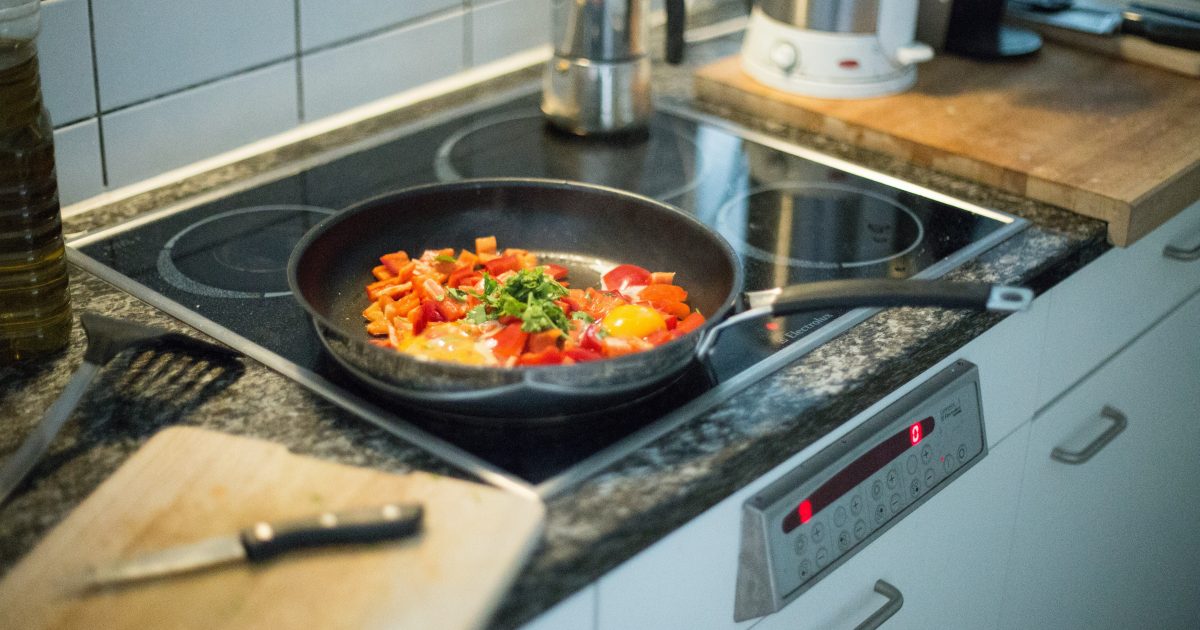
Heat Generation and Cooling
Radiant Cooktop
Radiant cooktops use electricity to heat a metal coil positioned beneath a smooth ceramic glass surface. The coil generates radiant heat that transfers through the glass, heating your cooking vessel. Due to the heating element involved, radiant cooktops produce heat unevenly, causing hot spots on the cooking surface. The heat also lingers on the surface even after the heat source is turned off, meaning these cooktops take longer to cool down.
Induction Cooktop
Induction cooktops, on the other hand, work on the principle of electromagnetic energy. Electricity passing through an electromagnetic coil beneath the glass ceramic surface creates an alternating magnetic field. This field induces an electric current in the magnetic cookware, producing heat directly in the pan, not the cooktop surface. As a result, induction cooktops tend to cool down faster, as the heating elements cease to generate heat when the pan is removed.
Risk of Burns and Injuries
Radiant Cooktop
The risk of burns and injuries is higher with radiant cooktops. The heat radiates across the cooking surface and can stay hot long after the heating elements have been turned off. Moreover, radiant cooktops also allow for more heat loss to the surrounding environment, making them less energy efficient than their induction counterparts.
Induction Cooktop
Induction cooktops minimize the risk of burns since the heat is generated directly in the cooking vessel, and the cooktop surface remains relatively cool. The heat source – induction elements – only heat the pot and the food within, meaning there’s less risk of burning your hands on a hot cooking surface. Additionally, induction cooking is more energy efficient, as less heat is wasted.
Automatic Shutoff and Child Lock Features
Radiant Cooktop
While radiant cooktops may not offer as many safety features, many modern models come equipped with automatic shutoff when the cooktop is left unused for a certain period. Some may even provide a child lock feature to prevent accidental turn-ons.
Induction Cooktop
Induction cooktops provide additional safety with features such as automatic cookware detection. When you remove the pot, the cooktop shuts off automatically. They also typically include child lock features, further reducing risks.
Energy Efficiency and Environmental Impact
One must consider energy efficiency and environmental impact factors when choosing a cooktop. Two of the most popular types include radiant and induction cooktops.
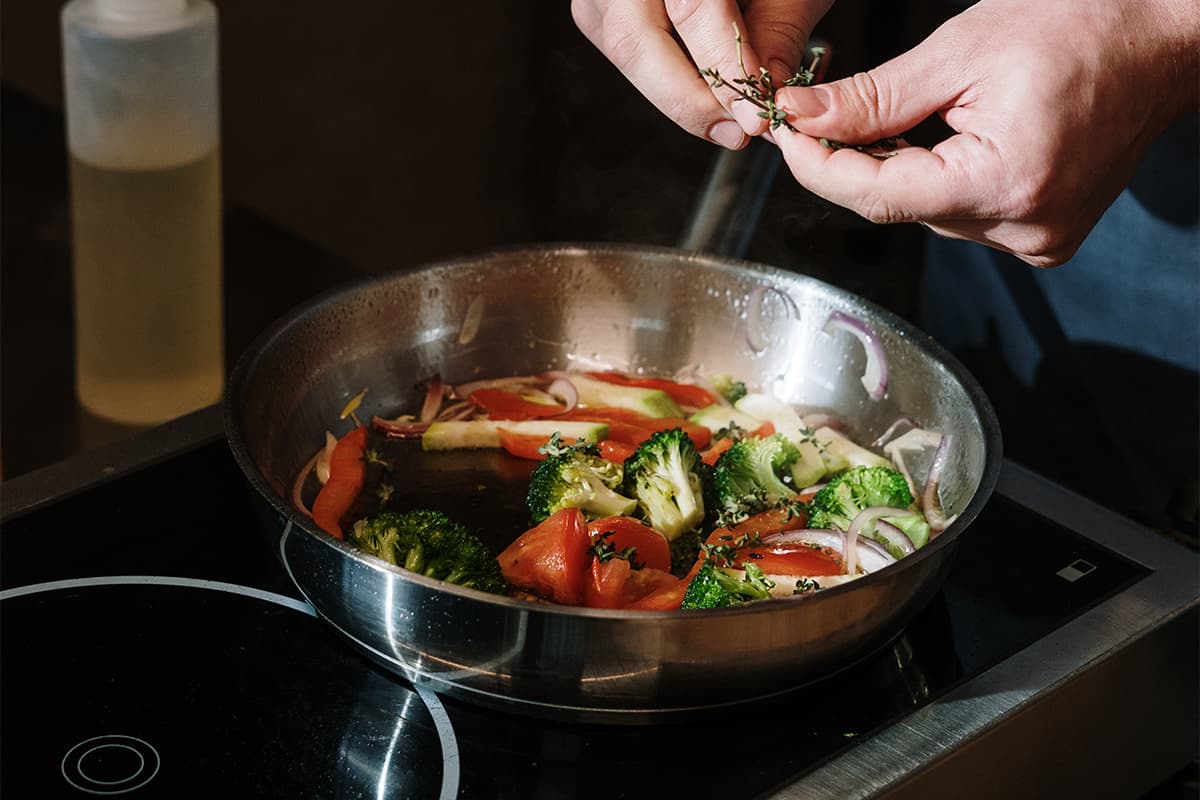
Energy Consumption
Radiant Cooktop
Radiant cooktops, with their smooth cooking surfaces and glass ceramic surface, create an inviting aesthetic for modern kitchens. These cooktops employ electric or metal coils as heating elements beneath the ceramic glass surface to generate heat. Electricity heats the metal coil, and the heat radiates to the glass surface and the cooking vessel. However, this transfer heat process can result in significant heat loss, rendering radiant cooktops less energy efficient than induction ones.
Induction Cooktop
The induction cooktop, a smooth surface akin to its radiant counterpart, works on an entirely different principle. Induction cooktops tend to be more energy-efficient due to their unique cooking method. They use electromagnetic coils that create an alternating magnetic field. This field, in turn, induces an electric current in the magnetic cookware placed on the cooktop. The heat generated comes directly from the pot or pan, significantly reducing heat waste. This precise heat control reduces energy consumption compared to radiant cooktops or gas stoves.
Environmental Impact
Radiant Cooktop
From an environmental perspective, radiant cooktops produce more heat waste than their induction counterparts. The bright heating element generates heat, which transfers to the cooking vessel. But this indirect heating means much heat radiates into the surrounding environment instead of cooking food. This heat loss contributes to higher energy use, making radiant cooktops less energy-efficient and having a more significant environmental impact.
Induction Cooktop
Contrastingly, induction cooktops excel in terms of environmental impact. By using electromagnetic energy to heat food directly, induction cooking minimizes heat loss, maximizing energy efficiency. The pot or pan heat source becomes the heating element, significantly reducing heat leakage into the surrounding environment. Moreover, induction cooking requires magnetic cookware, such as cast iron or stainless steel pots, which encourages using durable and long-lasting materials. The reduced energy use and durable materials make induction cooktops a more environmentally friendly choice.
Cost Comparison
When comparing radiant and induction cooktops, several factors come into play, including initial purchase and installation costs, operating costs, and repair and replacement costs. In this article, we will delve into each category to provide a comprehensive cost comparison between the two types of cooktops.
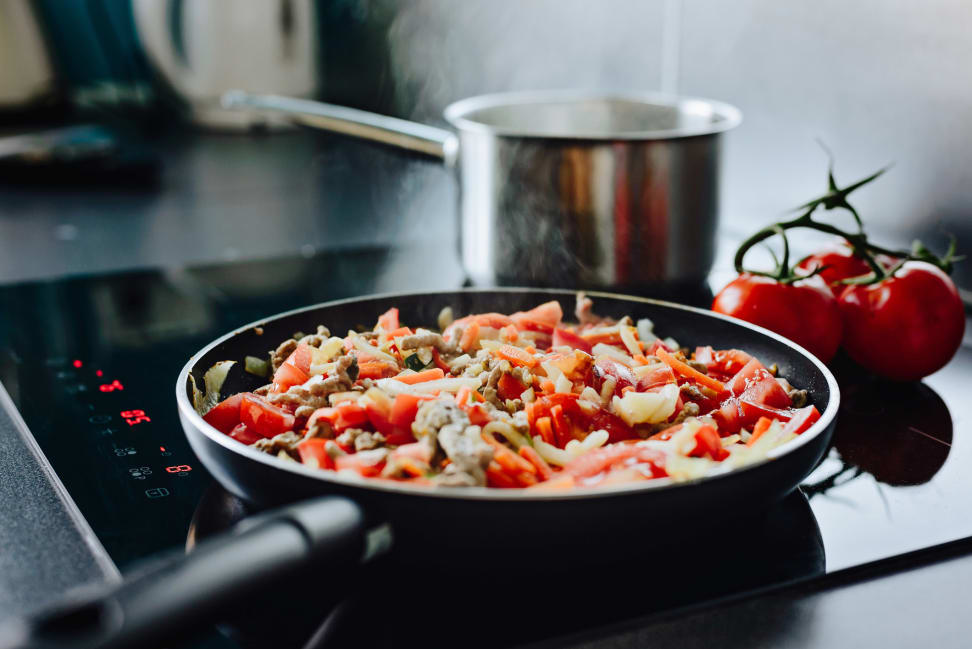
Initial Purchase and Installation Cost
Radiant Cooktop
Radiant cooktops are typically more affordable compared to their induction counterparts. These cooktops utilize a heating element, usually a metal coil, which generates heat when electricity passes through it. The cost of a radiant cooktop can vary depending on the brand, size, and features, but generally, they are less expensive to purchase and install than induction cooktops.
Induction Cooktop
Induction cooktops have a higher initial purchase and installation cost. These cooktops utilize electromagnetic energy to heat the cooking vessel directly, bypassing the need for a heating element. They require advanced technology and specialized components, such as induction elements and a glass ceramic surface that can withstand the magnetic field. These factors contribute to the higher price tag associated with induction cooktops.
Operating Cost
Radiant Cooktop
Radiant cooktops are known to be less energy-efficient compared to induction cooktops. They rely on transferring heat from the heating element to the cooking surface, which can result in heat loss and increased energy consumption. As a result, radiant cooktops tend to be less cost-effective in the long run, as they require more energy to heat the cooking vessel and the surrounding air.
Induction Cooktop
Induction cooktops excel in energy efficiency. There is minimal heat waste since they generate heat directly in the cooking vessel through electromagnetic energy. This makes induction cooktops highly energy-efficient and can result in lower operating costs over time. Additionally, the precise temperature control offered by induction cooktops allows for efficient cooking, reducing the likelihood of burned food and further saving on energy consumption.
Repair and Replacement Costs
Radiant Cooktop
Regarding repair and replacement costs, radiant cooktops generally have lower expenses. Since they consist of simpler components, such as electric coils, repairs and replacements are often more straightforward and less costly. However, it is worth noting that the heating elements in radiant cooktops can wear out over time and may require periodic replacements.
Induction Cooktop
With their advanced technology and electromagnetic coils, induction cooktops can have higher repair and replacement costs. Suppose any specialized components, such as the induction elements or the glass ceramic surface, become damaged. In that case, they can be more expensive to repair or replace than the heating elements in radiant cooktops. However, with proper care and maintenance, induction cooktops can have a long lifespan without significant issues.
Induction Cooktops vs. Radiant Cooktops: Making the Right Choice for Your Kitchen
After analyzing the features and benefits of induction cooktops and radiant cooktops, it is evident that both options have their advantages and considerations.
Personal preference and lifestyle considerations are crucial when deciding between induction and radiant cooktops. An induction cooktop may be the ideal choice if energy efficiency, precise temperature control, and a sleek, smooth cooking surface are essential. However, if you prefer the familiarity of traditional cooking methods, don’t mind a slightly higher heat loss, and already own cookware that is not induction compatible, a radiant cooktop might be a better fit for your needs.
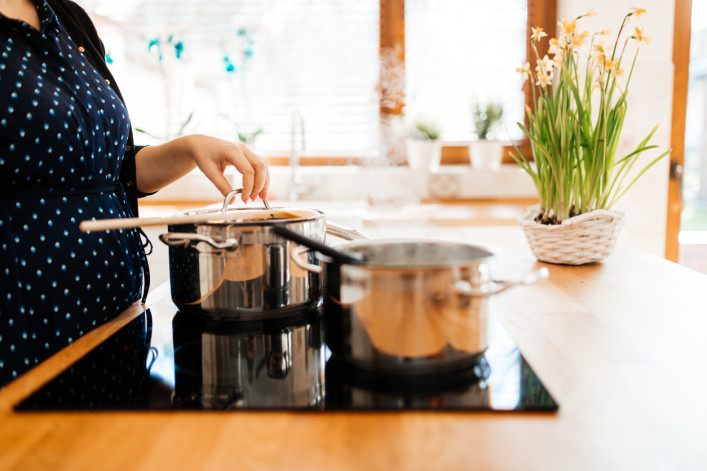
The choice between induction and radiant cooktops depends on your specific requirements and cooking style. Induction cooktops offer superior energy efficiency, precise temperature control, and a modern aesthetic. Radiant cooktops, while less energy efficient, provide a familiar cooking experience and can accommodate a broader range of cookware. Consider your preferences, lifestyle, and the features most matter to you to make an informed decision. Whether you opt for the sleek efficiency of induction or the traditional charm of radiant, both cooktop types can help you create delicious meals in your kitchen.
Indulge in the Flavors of the World, Vegan Style! Join Vegan Globetrotter Today!
Are you a passionate vegan with magical experience? Look no further than Vegan Globetrotter, your ultimate destination for all things vegan travel! Embark on a culinary adventure as you explore the vibrant flavors of the world, tailored exclusively to your plant-based lifestyle. Join our vibrant and ever-growing community of vegan enthusiasts on our social media platforms.
- Follow us on Facebook for mouthwatering vegan recipes, travel tips, and engaging discussions with fellow globetrotters.
- Get inspired by our stunning visual journey on Instagram, where we showcase the beauty of vegan cuisine and travel destinations.
- Save your favorite vegan finds on Pinterest for future reference.
- Stay up-to-date with the latest vegan travel trends and insights on Twitter.
Don’t miss out! Join us today and let your taste buds and wanderlust unite in an extraordinary vegan adventure!
Frequently Asked Questions
What is the main difference between induction cooktops and radiant cooktops?
Induction cooktops use electromagnetic fields to heat cookware directly, while radiant cooktops use electric heating elements under a glass surface to transfer heat to the cookware.
Which type of cooktop is more energy-efficient?
Induction cooktops are more energy-efficient since they heat the cookware directly, resulting in minimal heat loss. Radiant cooktops tend to have more heat loss due to heat transfer from the element to the cookware.
Are induction cooktops faster in cooking compared to radiant cooktops?
Yes, induction cooktops heat up much faster than radiant cooktops. The electromagnetic fields generated by the induction cooktops directly heat the cookware, resulting in quicker cooking times.
Do induction cooktops require specific cookware?
Yes, induction cooktops require cookware made of magnetic materials such as cast iron or stainless steel. Non-magnetic cookware like aluminum or copper will not work on induction cooktops.
Are radiant cooktops easier to clean?
Radiant cooktops are generally easier to clean since they have a smooth glass surface. Spills and splatters can be easily wiped off with a cloth. Induction cooktops may require more attention as spills can burn onto the surface if not cleaned promptly.
Which type of cooktop is safer to use?
Induction cooktops are considered safer as they do not produce open flames or red-hot electric coils. Additionally, induction cooktops only heat the cookware while the surface remains cool to the touch, reducing the risk of burns.
More Interesting Stuff!



Don't miss out
when new recipes and information are added!
Join our newsletter for free recipes,
healthy living inspiration, and special offers
You have Successfully Subscribed!